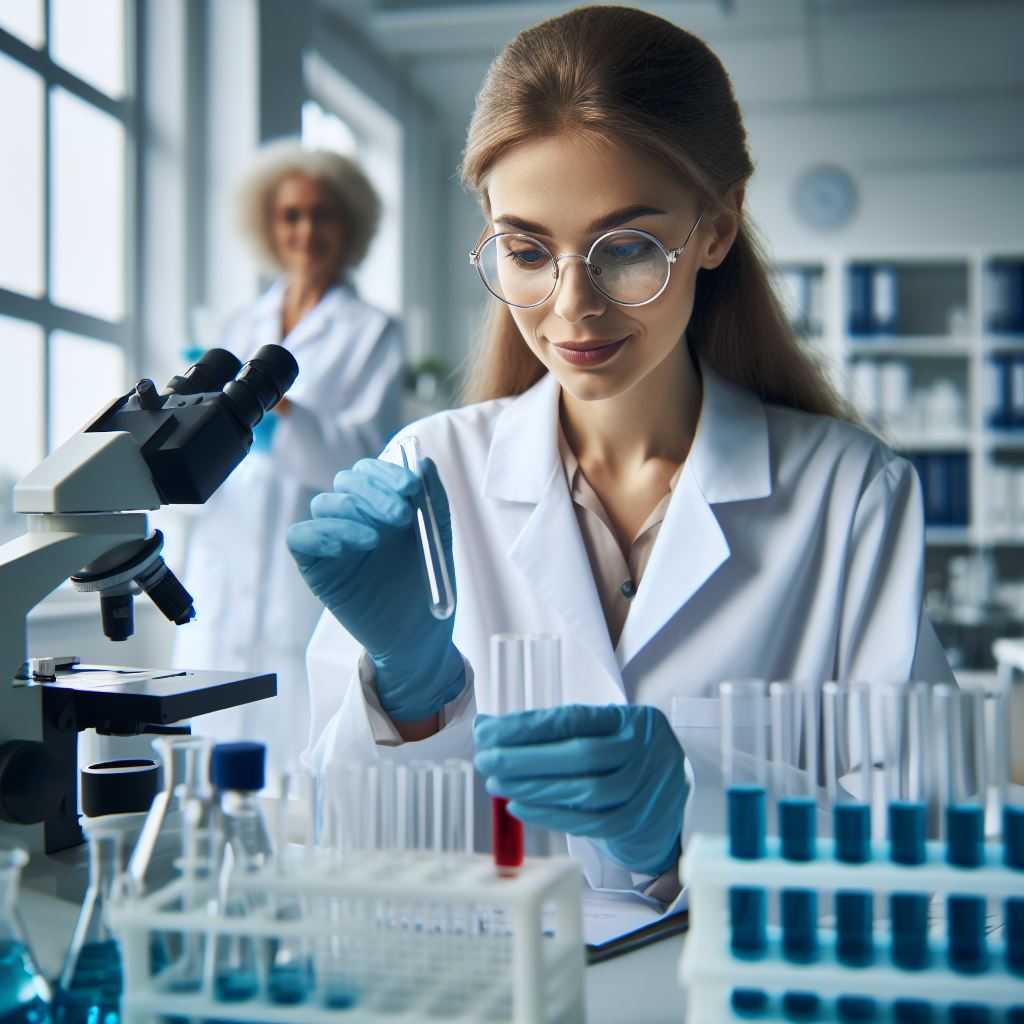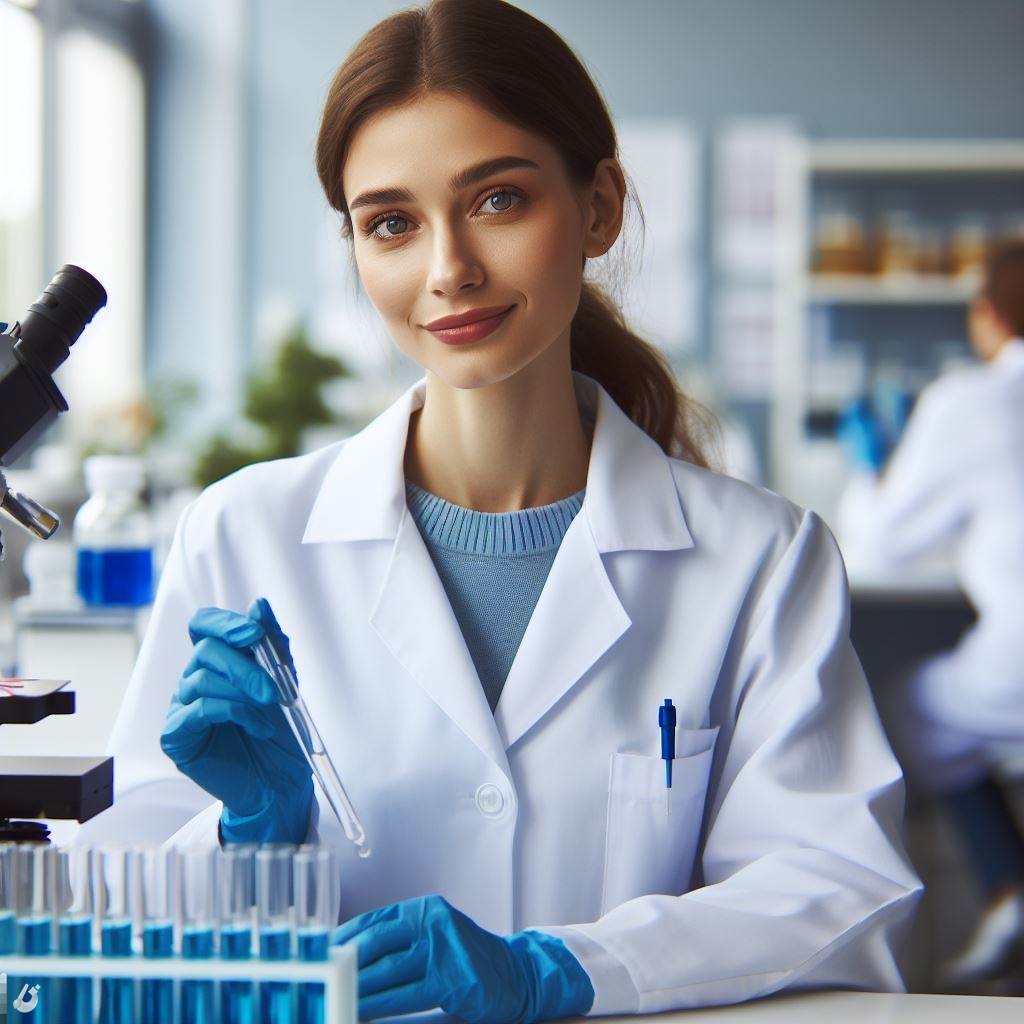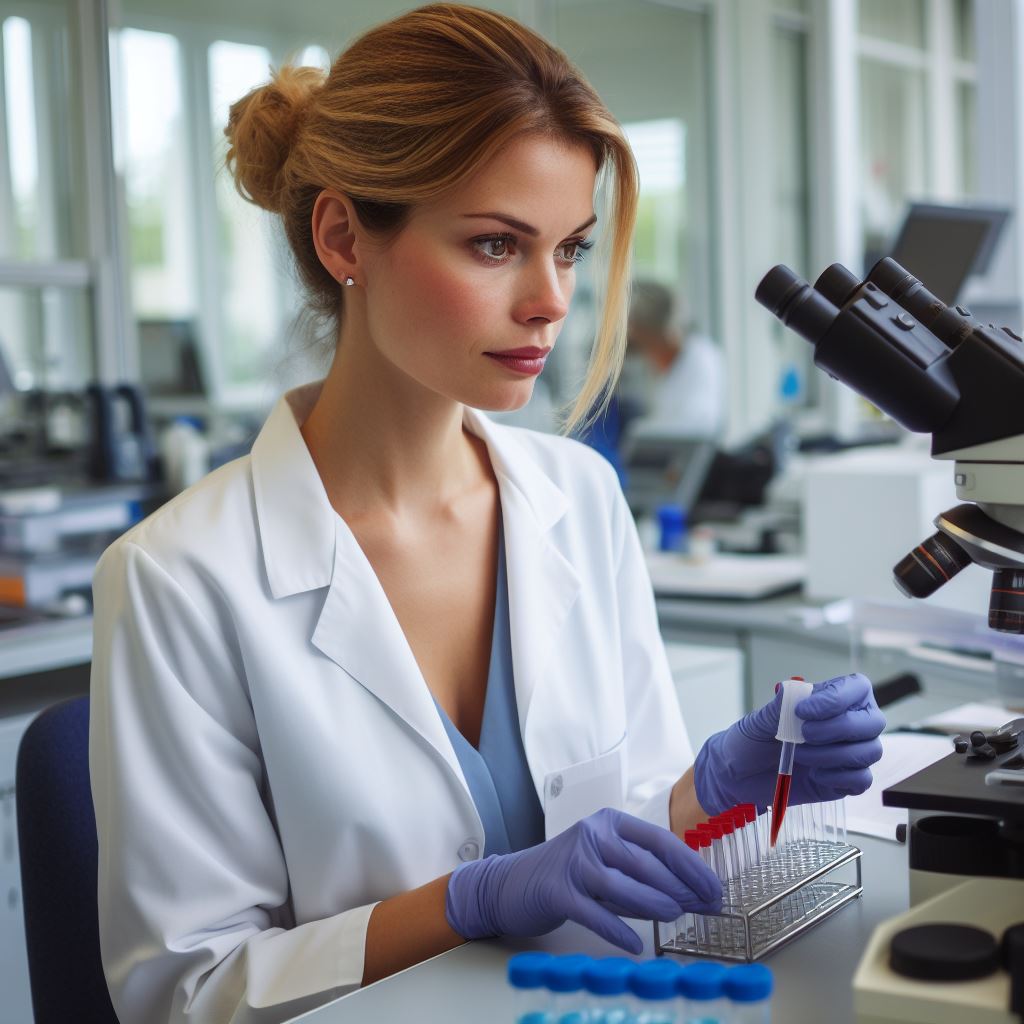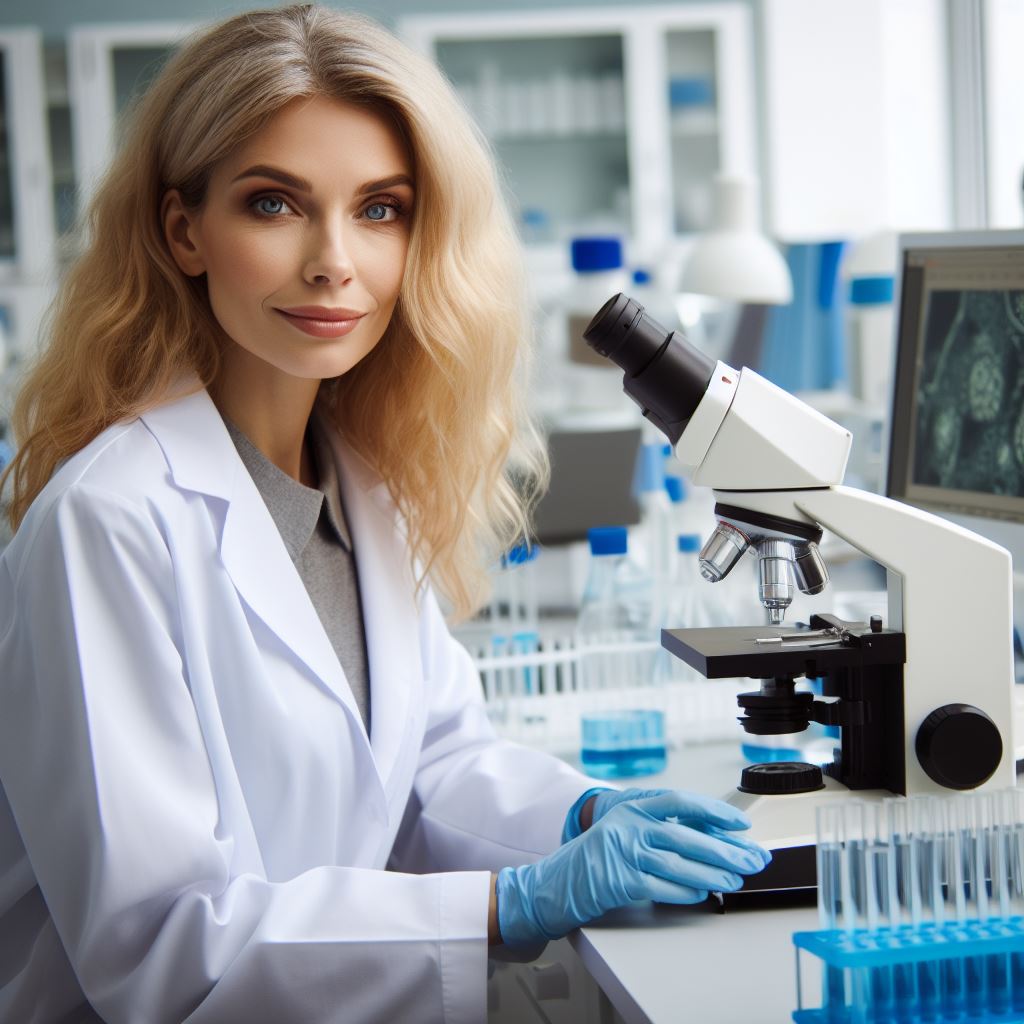Introduction
Embarking into the realm of lab safety for technicians in the UK is a journey marked by the utmost significance.
In this introduction, we underscore the paramount importance of creating and maintaining a secure work environment for these professionals.
Lab safety is not merely a set of guidelines but a commitment to the well-being of technicians and the integrity of scientific pursuits.
As we delve into this crucial topic, it becomes evident that understanding and mitigating potential risks and hazards within a lab setting are integral components of the technician’s daily responsibilities.
The lab, while a hub of innovation, is not without its challenges.
From chemical exposures to equipment malfunctions, technicians face a spectrum of potential risks.
Acknowledging and proactively addressing these hazards is fundamental, ensuring that technicians can execute their roles with confidence and contribute to scientific advancements in a safe and secure manner.
Personal Protective Equipment (PPE)
Technicians working in laboratories must prioritize their safety by wearing Personal Protective Equipment (PPE).
PPE refers to the specialized clothing and gear that offers protection against various hazards present in a laboratory environment.
Types of PPE for Technicians
- Lab Coats: Technicians should always wear lab coats made from flame-resistant material.
- Gloves: Technicians should use gloves made of appropriate material (latex, nitrile, or vinyl) depending on the chemicals they handle.
- Safety Goggles: Safety goggles provide eye protection and should be worn in all laboratory activities.
- Face Shields: In tasks with a high risk of splashes, technicians should wear face shields in addition to safety goggles.
- Respirators: Respiratory protection may be necessary when working with hazardous fumes or airborne particles.
By utilizing the appropriate PPE, technicians can significantly reduce the risk of accidents and injuries.
The Importance of Wearing Proper PPE
Wearing proper PPE, including lab coats, gloves, and safety goggles, is crucial for technicians for several reasons:
- Protection against Chemicals: PPE acts as a barrier between technicians and hazardous chemicals, preventing direct contact and potential harm.
- Prevention of Infections: Gloves protect technicians from biological hazards, such as bacteria, viruses, and other microorganisms.
- Eye Safety: Safety goggles shield technicians’ eyes from chemicals, flying objects, and potential eye irritants.
- Fire Safety: Lab coats made from flame-resistant materials help prevent injuries in case of accidental fires.
- Reduction of Contamination: Wearing PPE reduces the risk of contamination, ensuring accurate and reliable experimental results.
- Compliance with Regulations: Proper PPE usage ensures compliance with health and safety regulations, legal requirements, and industry standards.
It is crucial for technicians to remember that PPE is not optional but rather a fundamental aspect of their job responsibilities. Neglecting to use appropriate protective equipment can have severe consequences.
Technicians should always conduct a thorough risk assessment before starting any experiment to determine the necessary PPE.
They must consider the specific hazards associated with the materials, equipment, or processes involved.
Additionally, technicians should inspect their PPE before each use. They must ensure that the equipment is in good condition, free from tears or cracks that could compromise its protective capabilities.
If any PPE becomes damaged or no longer functions effectively, technicians should promptly replace it to maintain their safety.
Regular maintenance and cleaning of PPE are also essential to maximize their effectiveness.
Essentially, the use of Personal Protective Equipment (PPE) is of utmost importance for technicians working in laboratories.
Lab coats, gloves, safety goggles, and other specialized equipment play a vital role in keeping technicians safe from chemical, biological, and physical hazards.
By prioritizing their safety and following proper PPE guidelines, technicians can ensure a secure working environment for themselves and their colleagues.
Chemical Handling and Storage
In the laboratory, safe handling of chemicals is of utmost importance to prevent accidents and ensure the well-being of technicians and researchers.
Guidelines for Safe Handling of Chemicals in the Lab
- Always wear appropriate personal protective equipment (PPE) such as goggles, gloves, and lab coats.
- Handle chemicals with care, avoiding any direct contact with skin or inhaling toxic vapors.
- Avoid tasting, smelling, or touching chemicals unless specifically requested by experiment instructions.
- Ensure good ventilation by working in a fume hood or a well-ventilated area.
- Read and follow instructions provided by the manufacturer or on the chemical container.
- Dispose of chemicals properly according to established protocols and local regulations.
- If you are unsure about handling a particular chemical, seek guidance from a supervisor or experienced colleague.
The Importance of Proper Storage and Labeling of Chemicals
- Proper storage of chemicals is crucial for maintaining their integrity and minimizing potential risks.
- Store chemicals in designated areas, away from sources of heat, direct sunlight, and incompatible substances.
- Segregate chemicals according to their compatibility to prevent accidental reactions or spills.
- Use appropriate storage containers that are sealed tightly to prevent leakage or evaporation.
- Label all chemical containers clearly with the name of the chemical, hazard warnings, and date of receipt.
- Regularly check stored chemicals for signs of deterioration or expiration and dispose of them accordingly.
The Need for Understanding Material Safety Data Sheets (MSDS)
- Material Safety Data Sheets (MSDS) provide crucial information about the hazards, handling, and storage of chemicals.
- MSDS contain details about the chemical’s physical and chemical properties, health hazards, and proper safety precautions.
- It is essential to familiarize yourself with the MSDS of each chemical you work with before starting any experiment.
- MSDS help identify appropriate PPE, first aid measures, and emergency procedures in case of accidents or spills.
- By understanding MSDS, technicians can make informed decisions regarding the safe handling and storage of chemicals.
- Keep MSDS accessible in the laboratory, and ensure they are updated whenever there are changes in the chemical’s properties.
By following guidelines for safe chemical handling, proper storage, and utilizing MSDS, laboratory technicians can significantly reduce the risk of accidents and maintain a safe working environment.
Always prioritize safety and never hesitate to seek advice or assistance when dealing with unfamiliar chemicals or procedures.
Equipment and Machinery Safety
The importance of regular equipment maintenance and calibration
One of the key aspects of lab safety is ensuring the proper maintenance and calibration of equipment and machinery.
Regular maintenance and calibration of equipment is crucial for several reasons. Firstly, it helps to ensure the accuracy and reliability of the data collected in experiments.
If equipment is not well-maintained, it may give incorrect readings or produce inconsistent results, leading to invalid or unreliable conclusions.
The proper usage and handling of lab equipment and machinery
Furthermore, proper maintenance and calibration can help to prolong the lifespan of equipment.
By identifying and addressing any potential issues early on, technicians can prevent costly breakdowns or repairs, as well as minimize downtime in the lab.
When it comes to using and handling lab equipment and machinery, following proper protocols and procedures is essential to maintain a safe working environment.
Personalized UK Career Consulting
Receive tailored career guidance designed just for you. Get actionable steps and expert support to boost your career in 1-3 days. Take control of your career now.
Get StartedThe need for thorough training and understanding of operating manuals
Technicians must be adequately trained on how to operate specific equipment and machinery, ensuring they possess a thorough understanding of its functionality and limitations.
This includes being familiar with operational manuals, which provide vital information on correct usage, maintenance, and troubleshooting.
In addition to training, it is crucial to strictly adhere to safety guidelines and procedures when working with lab equipment and machinery.
This includes wearing appropriate personal protective equipment (PPE) such as gloves, goggles, and lab coats to minimize the risk of injury.
Regular inspections of lab equipment and machinery are also necessary to detect any signs of wear and tear, damage, or malfunction.
Technicians should be trained to recognize and report any issues promptly, ensuring that necessary repairs or replacements are carried out in a timely manner.
Furthermore, technicians must be aware of the importance of proper storage and transportation of equipment.
This includes ensuring that equipment is stored in appropriate conditions and that it is securely transported when necessary.
It is worth noting that different types of lab equipment and machinery may have specific requirements for maintenance and calibration.
Therefore, technicians must familiarize themselves with these guidelines and follow them diligently.
Overall, the proper usage, handling, and maintenance of lab equipment and machinery play a vital role in ensuring safety and productivity in the laboratory.
Technicians must receive comprehensive training, understand operating manuals, and adhere to safety protocols to minimize the risk of accidents and ensure accurate results.
Read: Climate Change Research in the UK Explained
Emergency Procedures
Spills, Fires, and Accidents
In case of spills, fires, or accidents, it is crucial to act swiftly and responsibly.
- Spills: Immediately contain the spill, using appropriate materials, to prevent further contamination.
- Fires: Evacuate the lab, activate fire alarms, and use fire extinguishers to control the fire.
- Accidents: Attend to injured personnel, provide first aid if necessary, and notify the relevant authorities.
Knowing the Location of Safety Equipment
Knowing the exact location of safety equipment can save time and potentially lives.
- Fire extinguishers: Note the position of fire extinguishers in your lab and understand how to use them.
- Safety showers/eyewash stations: Be aware of their locations for quick access in case of chemical spills or eye injuries.
- First aid kits: Know where first aid kits are situated and familiarize yourself with their contents.
- Emergency exits: Memorize the locations of emergency exits to quickly evacuate the lab during emergencies.
Evacuation Plans
Understanding evacuation plans is essential to ensure a safe evacuation during emergencies.
- Familiarize: Become familiar with the evacuation plan provided in your lab and understand the designated assembly points.
- Practice drills: Participate actively in fire drills to ensure you are aware of the evacuation procedure.
- Follow instructions: During an actual emergency, follow the instructions of your lab supervisor or emergency personnel.
- Do not use elevators: Always use stairs during evacuations, as elevators may malfunction during emergencies.
Informing Others
Communicating lab emergencies promptly helps prevent further harm and ensures assistance reaches those in need.
- Alert your supervisor: Inform your lab supervisor immediately about any emergencies you witness or experience.
- Dial emergency services: If necessary, call emergency services (e.g., 999 in the UK) to report the situation.
- Activate alarms: If the emergency situation warrants it, activate the lab’s alarm system to alert others.
Coordinating with Others
During emergencies, collaborating with others effectively is crucial for a safe and efficient response.
- Work as a team: Coordinate with fellow technicians and lab personnel to address emergencies effectively.
- Delegate responsibilities: Assign specific tasks to individuals to ensure a systematic and organized response.
- Follow designated roles: If your lab has designated emergency response roles, fulfill your assigned responsibilities accordingly.
Updating and Reviewing Procedures
Regularly updating and reviewing emergency procedures ensures readiness and adherence to safety protocols.
- Regular training: Attend training sessions focused on lab safety and emergency response to stay informed about the latest procedures.
- Periodic reviews: Regularly review emergency procedures to ensure they remain relevant and up to date.
- Incorporate feedback: Incorporate feedback from actual emergency scenarios to improve the existing procedures
In review , being prepared for lab emergencies is of utmost importance.
By following the necessary steps for spills, fires, and accidents, knowing the location of safety equipment, understanding evacuation plans, informing others promptly, coordinating with colleagues.
And updating procedures, technicians can create a safer lab environment for everyone involved.
Read: Networking Tips for UK Research Scientists
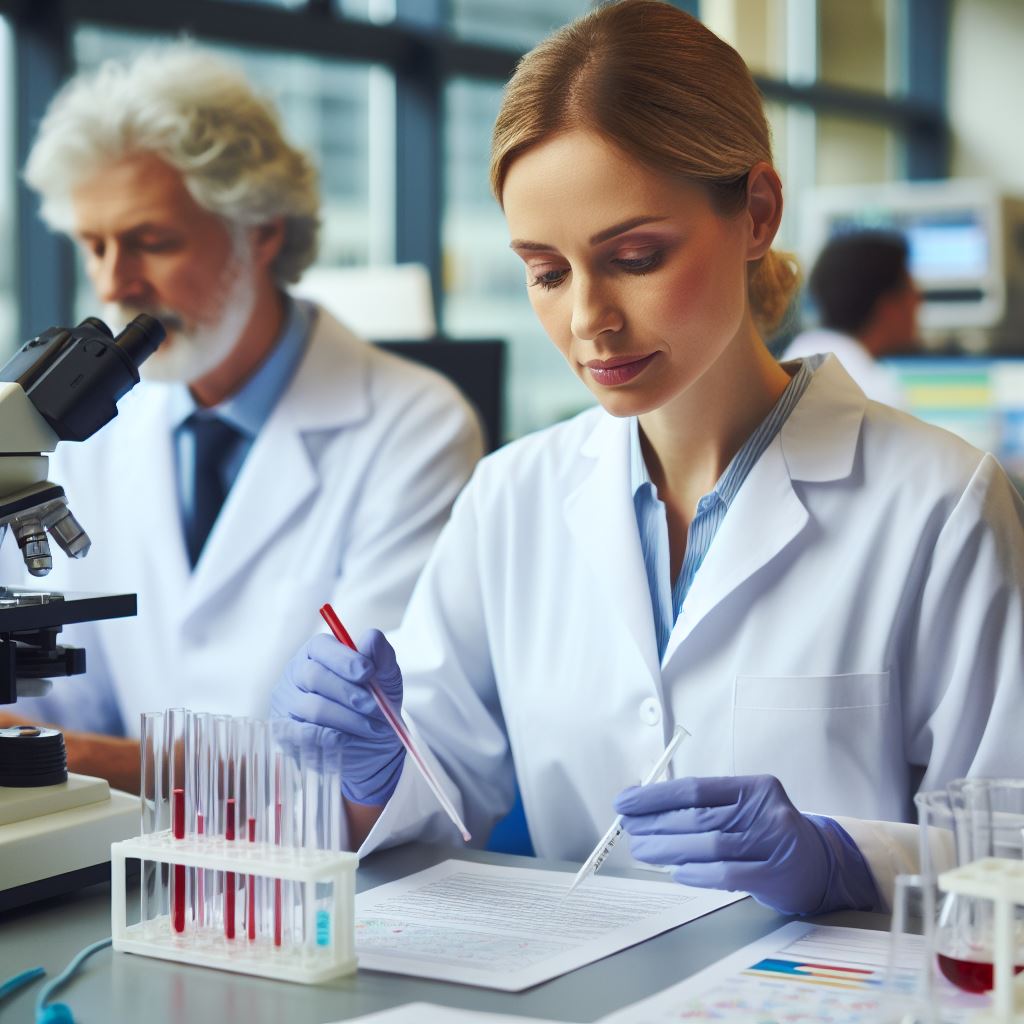
Waste Disposal
The proper methods of handling and disposing of hazardous waste
In this section, we will discuss the essential methods of handling and disposing of hazardous waste in laboratories.
It is crucial to understand the importance of following legal and ethical guidelines when dealing with lab waste.
The importance of following legal and ethical guidelines when disposing of lab waste
Proper Handling Techniques
- Wear appropriate personal protective equipment (PPE) such as gloves, goggles, and lab coats.
- Ensure that hazardous waste containers are clearly labeled with the correct information.
- Separate different types of waste to prevent cross-contamination.
- Use leak-proof and durable containers for collecting hazardous waste.
- Avoid overfilling containers and never mix incompatible substances.
- Ensure that waste storage areas are well-ventilated and away from heat sources.
The Importance of Following Legal and Ethical Guidelines
Proper waste disposal is not only crucial for the safety of lab technicians but also for the environment and public health. By following legal and ethical guidelines, we can:
- Prevent injuries or illnesses caused by mishandling hazardous waste.
- Minimize the risk of contaminating air, water, and soil with toxic substances.
- Comply with government regulations and avoid penalties or legal consequences.
- Demonstrate a commitment to responsible scientific practice and ethical conduct.
Methods of Disposing Hazardous Waste
Proper disposal of hazardous waste involves various methods based on the characteristics of the waste. Some common techniques include:
- Chemical Neutralization: Adjusting the pH level of acidic or alkaline waste to make it less hazardous.
- Incineration: Burning waste at high temperatures to convert it into non-hazardous materials.
- Landfill: Burying waste in designated areas that meet specific environmental criteria.
- Recycling: Reusing or reprocessing waste materials to reduce environmental impact.
- Autoclaving: Subjecting waste to high-pressure steam to sterilize and render it harmless.
Disposal of Specific Hazardous Waste
Different types of hazardous waste require specific disposal methods to ensure maximum safety. Examples include:
Your Dream Job Starts with a Perfect CV
Get a tailored CV and cover letter that captures your unique strengths and stands out in your industry. Let us help you make an unforgettable first impression.
Get Started- Chemical Waste: Segregate based on compatibility and label containers with specific chemical names.
- Biological Waste: Autoclave or chemically treat to prevent the spread of infectious agents.
- Radioactive Waste: Store securely and follow radiation safety guidelines for disposal.
- Sharps Waste: Use puncture-resistant containers and arrange for proper disposal through approved channels.
- Electronic Waste: Recycle according to regulations to recover valuable materials and avoid environmental pollution.
Remember, the safe handling and disposal of hazardous waste are essential responsibilities for all lab technicians.
By following proper procedures and regulations, we can protect ourselves, the environment, and future generations from potential harm.
We hope you found this section on waste disposal informative and helpful. Stay tuned for the next section, where we will explore the importance of emergency preparedness in laboratories.
Read: Key Skills Needed for UK Research Scientists
Communication and Documentation
The significance of clear communication among lab technicians regarding safety protocols and hazards
Clear communication among lab technicians regarding safety protocols and hazards is of utmost importance.
Maintaining accurate records and documentation is crucial to ensure lab safety incidents are properly addressed.
Lab technicians should regularly update records related to safety training and inspections.
Effective communication regarding hazards helps prevent accidents and ensures a safe working environment.
Documentation provides a reference for future safety improvements and compliance with regulations.
Lab technicians should communicate any safety concerns or incidents promptly to their supervisors.
Clear communication reduces the risks of misunderstandings and potential hazards in the lab.
The importance of maintaining accurate records and documentation related to lab safety incidents, training, and inspections
Proper documentation allows for an accurate evaluation of safety protocols and potential improvements.
Lab technicians should document any deviation from safety procedures and report them to supervisors.
Accurate records can help identify trends, recurring issues, and areas that require additional safety measures.
Documentation should include the date, time, details, and any corrective actions taken related to safety incidents.
Optimize Your LinkedIn for Success
Boost your LinkedIn profile with a professional bio, keyword-rich headline, and strategic recommendations that attract recruiters. Stand out from the crowd and get noticed.
Optimize NowLab technicians should maintain a safety manual or handbook with clear instructions and procedures.
Clear instructions in the safety manual facilitate proper communication and understanding among lab technicians.
Regular safety meetings should be held to encourage communication and address any concerns or questions.
Lab technicians should document their attendance and participation in safety training sessions and meetings.
Effective communication ensures that all lab technicians are aware of safety procedures and adhere to them.
Accurate documentation helps demonstrate compliance with safety regulations during inspections or audits.
Documentation should be organized and easily accessible to allow for quick reference and retrieval of information.
Lab technicians should report any near misses or potential hazards that they observe during their work.
Communicating near misses can help identify and eliminate potential hazards before accidents occur.
Documentation of near misses provides valuable information for improving safety protocols and procedures.
Lab technicians should be encouraged to ask questions and seek clarification to ensure proper understanding of safety guidelines.
Regular communication fosters a culture of safety and encourages a proactive approach towards preventing accidents.
Accurate and detailed documentation is essential in the event of any legal or liability issues.
Proper documentation allows for a thorough investigation of incidents and aids in identifying root causes.
Lab technicians should document any changes or updates made to safety procedures or protocols.
Regular communication and documentation help maintain a high level of safety awareness within the lab.
Read: UK Research Grants: A Beginner’s Guide
Delve into the Subject: The Future of Biology Careers in the UK
Training and Education
The need for continuous training and education on lab safety
Continuous training and education are vital for all technicians involved in laboratory work.
The dynamic nature of scientific research and rapid advancements in technology make it imperative for technicians to stay updated on lab safety protocols and practices.
Why is continuous training and education necessary? First and foremost, it helps technicians develop a strong understanding of safety procedures and precautions.
By regularly refreshing their knowledge, technicians can ensure they are up to date with the latest norms and regulations related to lab safety.
Moreover, constant learning equips technicians with the necessary skills to handle and operate various laboratory instruments and equipment.
This comprehensive understanding ensures safer practices and minimizes the risk of accidents or mishaps.
Resources and certifications available for technicians to enhance their knowledge and skills
To enhance their knowledge and skills, technicians can find a range of resources and certifications available to them. Here are some valuable options:
1. Online Courses
Numerous online platforms offer specialized courses, tailored specifically for lab technicians.
These courses cover a wide range of topics, such as chemical handling, electrical safety, and personal protective equipment (PPE) usage.
2. Workshops and Seminars
Attending workshops and seminars organized by reputable organizations provides technicians with opportunities to interact with industry experts and learn from their experiences.
These events often focus on emerging trends and best practices in lab safety.
3. Professional Associations
Joining professional associations dedicated to lab safety.
Associations such as the Institution of Occupational Safety and Health (IOSH) or the Health and Safety Executive (HSE), provides technicians access to exclusive resources, webinars, and certifications.
4. Safety Manuals and Guidelines
Technicians should regularly refer to safety manuals and guidelines provided by regulatory bodies or employers. These documents outline specific safety protocols and serve as handy references for technicians.
5. Collaboration and Networking
Engaging in peer-to-peer collaboration and networking within the scientific community allows technicians to share experiences, discuss challenges, and exchange safety-related knowledge.
This collective learning approach ensures a broader understanding of lab safety.
Certifications play a crucial role in validating a technician’s expertise and can enhance their credibility within the field. Some widely recognized certifications include:
- The National Examination Board in Occupational Safety and Health (NEBOSH) National General Certificate in Occupational Health and Safety: This certification provides a solid foundation in health and safety concepts and principles.
- The Institute of Science and Technology (IST) Certification in Laboratory Technology: This certification focuses specifically on lab safety, covering key aspects such as risk assessment, chemical storage, and waste management.
- The Chartered Chemist (CChem) Certification: Aimed at chemists, this certification recognizes individuals who have attained a high level of scientific knowledge and competence in a variety of chemistry-related areas, including lab safety.
By acquiring certifications, technicians can demonstrate their commitment to upholding high standards of lab safety.
Employers often prioritize hiring certified technicians, as it ensures a safer working environment and reduces the risk of accidents or incidents.
In short, continuous training and education are fundamental for technicians to ensure lab safety.
Availing resources like online courses, attending workshops, joining professional associations, and obtaining certifications equips technicians with the necessary knowledge and skills to uphold the highest safety standards in their labs.
By investing in their professional development, technicians contribute to a safer and more secure working environment for themselves and their colleagues.
Conclusion
In closing, it is crucial for UK technicians to understand and implement essential lab safety practices. By following safety protocols, they can create a safe working environment.
Throughout this section, we have highlighted various aspects of lab safety that are vital for technicians to remember.
These include wearing appropriate personal protective equipment, properly handling chemicals, and maintaining a clean and organized workspace.
Additionally, we have emphasized the importance of staying up-to-date with safety regulations and receiving appropriate training.
Technicians must be aware of potential hazards and know how to respond in emergency situations.
By adhering to these guidelines, UK technicians can ensure their own safety as well as the safety of their colleagues.
Neglecting lab safety protocols can have serious consequences, including injuries, accidents, and even fatalities.
Therefore, it is essential for technicians to always prioritize safety and make it a fundamental part of their work routine.
By doing so, they contribute to a positive and secure lab environment where everyone can perform their duties without unnecessary risks.
To reinforce these principles, regular safety audits and evaluations should be conducted, and any necessary improvements should be implemented promptly.
Safety is everyone’s responsibility, and continual vigilance is the key to maintaining a safe working environment.
In the end, lab safety is not an option but a necessity. Prioritizing safety is the surest way for UK technicians to carry out their work effectively and prevent accidents or injuries in the lab.

